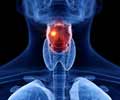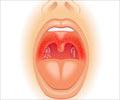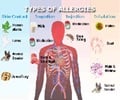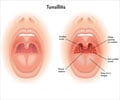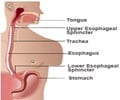- Digestive Diseases Statistics for the United States - National Digestive Diseases Information Clearninghouse. (n.d.). Home - National Digestive Diseases Information Clearninghouse. Retrieved March 5, 2012
- Throat Disorders - (http://www.nlm.nih.gov/medlineplus/throatdisorders.html)
- Gastroesophageal reflux disease - (http://www.nlm.nih.gov/medlineplus/gerd.html)
What is Throat Disorders?
Throat disorders affect a region known as pharynx - a tube-like structure that transports food from the mouth to esophagus. It also helps to transport air from the nostrils through the trachea (wind pipe) and the larynx to the lungs.
There are several problems of the throat, of which the sore throat is the most common. In most people the causes of sore throat include allergies, infections or gastric acid reflux. Many of these will go away on their own. However in some it may be due to much graver causes, such as cancer. Treatment and prognosis for the throat disorders will depend on the original condition.
Some Common Conditions of the Throat
A) Sore Throat (Pharyngitis) - A person can have a sore throat for a variety of reasons. It’s often a symptom of common cold and influenza (or flu), a respiratory infection caused by viruses. Mostly, flu resolves on its own.
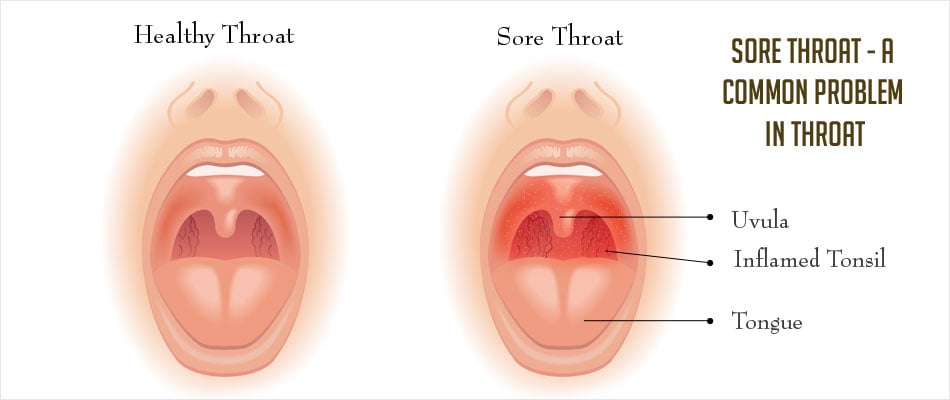
Common causes that lead to sore throat include -
- Allergies too can lead to sore throat. They are caused due to the body’s immune system reaction to allergens or foreign particles including pollen, dander, mites, spores, certain food and even some medications. Allergic reactions can be mild or severe. Severe allergic reactions like anaphylaxis, can be severe and life-threatening. Anaphylaxis can lead to swelling of the throat leading to difficulty with breathing.
- Infectious mononucleosis also called the Kissing Disease (from its oral transmission) is a common, contagious infection caused by the Epstein-Barr virus (EBV). It is common in teenagers and young adults and spreads through the saliva from one person to another. Sore throat, fever and fatigue are the symptoms of mononucleosis caused by EBV.
B) Strep Throat is also a symptom of Streptococci bacterial infections of the throat and tonsils. These infections are mainly caused by the Strep A bacteria. Pain when swallowing, swollen throat, fever and white and yellow spots at the back of throat are signs of strep throat. Diagnosis is confirmed by culturing a swab specimen collected from the inside of the throat. It is a contagious condition which can pass from an infected person to a non-infected person while sneezing or coughing. Strep throat can be controlled with the help of antibiotics.
C) Tonsillitis - Tonsils are structures located behind the throat and adenoids are located behind the nose and together they trap the germs that enter the body through the mouth and nose. Tonsils and adenoids are part of the lymphatic system that help with the immunity of the body. They can sometimes get infected and sore leading to tonsillitis. Sore throat is a symptom of tonsillitis. It can be controlled with the help of antibiotics.
D) GERD (Gastroesophageal Reflux Disease) - Esophagus is the tube that carries food from the mouth to the stomach. When the muscles at the end of the esophagus do not close properly the contents of the stomach reflux back into the esophagus and cause irritation leading to a burning sensation in the throat and the chest (heartburn). It is estimated that at least20% of adults in the U.S. suffer from heartburn due to GERD at least once a week.
Other symptoms of GERD include dry cough and trouble while swallowing.
The condition can affect anyone - infants, children and adults. However it is more common among the elderly and pregnant women. In some people the condition improves through lifestyle changes such as small, easily digestable oil/fat-free diet and avoiding late night snacks. Losing weight and cutting down on alcohol and smoking too help in the long term.
Obesity and GERD - A small increase in weight above the normal weight can lead to GERD. It is a common problem among the overweight population. However the good news is that if one loses weight, GERD symptoms improve or go away completely.
Depending on the severity of GERD, treatment is recommended. In some GERD patients lifestyle changes are adequate, other may need medication and the more severe cases require surgery.
Surgery for GERD - Laparoscopic surgery allows a surgeon to do a simple procedure called ‘Fundoplication’ to cure the problem of GERD. In this surgery a part of the upper part of the stomach called the fundus is wrapped around the lower end of the esophagus. The surgery reinforces the closing function of sphincter of the esophagus. This surgery is also the treatment for a condition called hiatal hernia (stomach hernia).
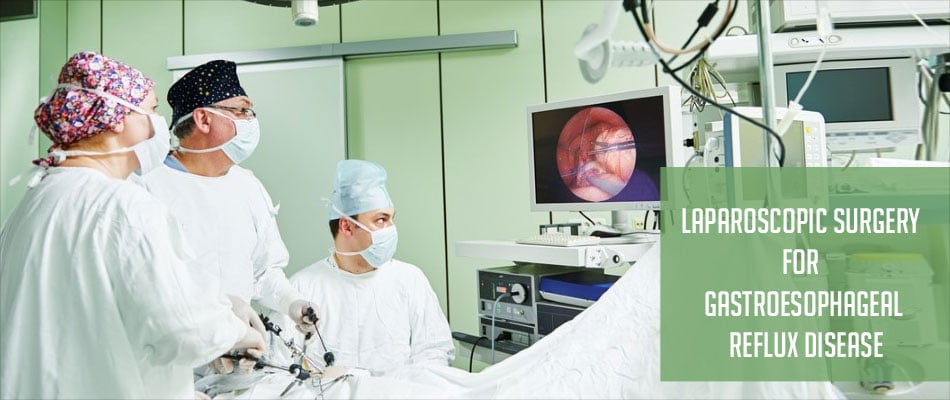
E) Cancer - Throat cancer may be categorized as head and neck cancer. Depending on the region of the throat (oropharynx, the hypopharynx, nasopharynx, larynx ) throat cancer can get different names. Smoking and alcohol use increase throat cancer risk.
Symptoms of throat cancer include -
- Difficulty in breathing
- Troubled speech
- Intermittent headaches
- Ear pain
- Pain or ringing in the ears
- Trouble swallowing
Treatments for throat cancer are similar to other cancers. They include surgery, radiation therapy, and chemotherapy.


